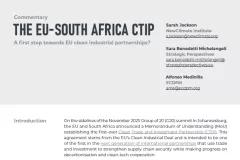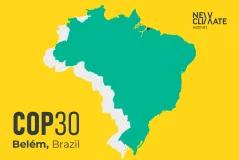
Image via Pixabay
A few weeks ago, the G20 published a report on “Boosting MDBs’ investing capacity” written by an expert panel tasked with an independent review of Multilateral Development Banks’ Capital Adequacy Frameworks. The main objective of the report was to provide recommendations on how MDBs can make the most efficient use of public funds i.e. taxpayer money and more effectively attract, and mobilize private capital from global financial markets. The report is timely considering MDB’s important role in the current climate and food crises as well the growing number of emerging and developing economies in danger of defaulting on sovereign debt. It is also highly relevant to the MDB’s 3rd Paris alignment building block on mobilizing climate finance for developing countries and 6th building block on reporting – key measures for MDBs to make good on their commitment to align themselves with the Paris Agreement.
There is one significant barrier to fulfilling a number of recommendations about how to better access global financial markets: a lack of transparency and the associated doubts surrounding some MDB’s lending especially when it comes to climate finance quality, enforcement of due diligence processes, and screening of financial intermediaries and other private sector lending.
The issue of transparency with respect to MDB lending has come up several times in recent debates. The G20 report cites that “financial markets have long been calling for more transparency through data disclosure, harmonization and standardization, in particular to assess the risks of investing with or alongside the MDBs”. This builds on the previous recommendation, which suggests that rating agencies do not currently have sufficient information to assess Environmental Social Governance (ESG) risks of MBD projects or portfolios – either positively or negatively. This call for transparency echoes a key request in a leaked document from the US Treasury that in particular called for the World Bank Group “to guarantee the quality of its climate finance by improving transparency in reporting on climate co-benefits, including by disclosing in project documents the components and subcomponents and share of total financing that is counted as climate finance”. Civil society actors are also active in calling for improved transparency and accountability among DFIs.
Just last year, private financial institutions controlling trillions came together to form GFANZ, a financial sector initiative to accelerate the transition to a net-zero economy. Climate friendly investment opportunities are a hot topic right now. Promises of sustainability continue to attract investors and green bond flotations are often oversubscribed. These institutions are interested and eager to find investment opportunities in the sector and ideally MDBs should be well placed to de-risk, channel, and mobilize those trillions. Ongoing investigations and fines for greenwashing will keep them on their toes and may give them pause and lead them to demand more information and better safeguards in the future.
It was not so long ago that it emerged that the International Finance Corporation’s (IFC) first “Green Equity Approach” client backed Indonesian coal plant expansions. Which means that the IFC at least indirectly supported coal-fired electric generation capacity. Now more public development bank finance such as from the ADB is being used to retire coal in Indonesia and G7 countries including the US are trying to put together a “Just Energy Transition Partnership” to help Indonesia phase out coal.
Following on that, the Compliance Advisor Ombudsman (CAO), the independent accountability mechanism of the IFC and the Multilateral Investment Guarantee Agency (MIGA) has come out with other troubling findings. In one instance, the CAO found that the IFC did not comply with its own Environmental and Social requirements and did not apply its own Performance Standards when it invested in the Rizal Commercial Banking Corporation (RCBC), which similarly went on to finance 10 coal-fired power plants in the Philippines. The ADB has a similar agreement with the Philippines to accelerate retirement of coal capacity.
These findings are joined with increased scrutiny by organizations pointing out the high-risk projects linked to some Development Finance Institutions’ (DFI) counterparties. And others highlighting what could have been links in the financial chain connecting DFIs such as the EIB and the KfW with State Bank of India and its potential support for the Adani owned Carmichael coal mine in Australia. What does that mean when a DFI wants to float a green bond or securitize some of its investments to mobilize more climate finance? Amundi SA, a large European asset manager, already concluded that it should divest of SBI’s “Green” Bonds.
That calls for more transparency are emerging from the G20, from the US Treasury, and from civil society is a promising sign. Due diligence, transparency and accountability, including really knowing all your customers – and their subprojects and their own screening criteria - are key to demonstrate efforts towards Paris alignment and avoid greenwashing. Taxpayers and MDB shareholders want to know that their money is being put to good use and that they are not putting in more money to clean up dirty projects that have supported with previous public funds. It will only become more and more important to be able to access sustainably minded private investors and mobilize capital for truly sustainable investment opportunities in developing countries.





